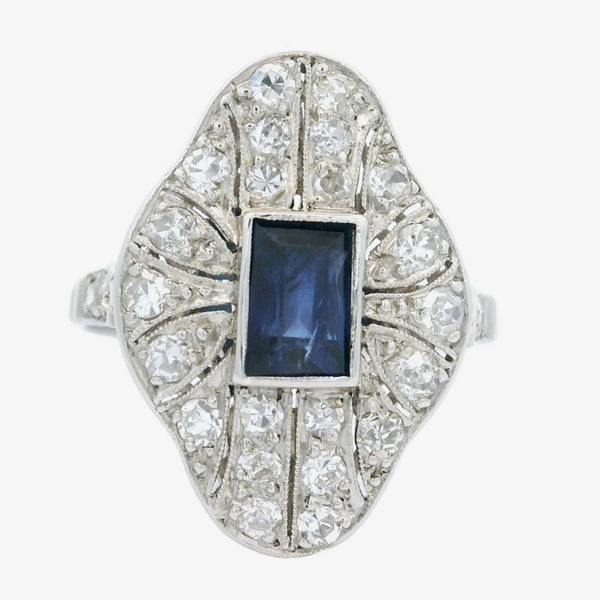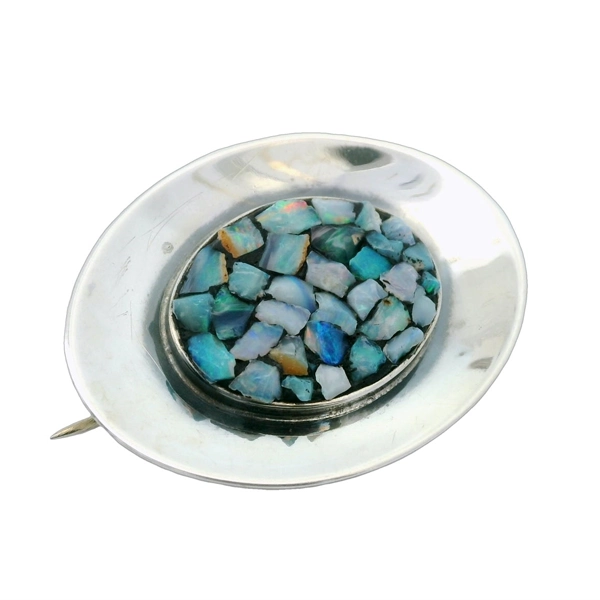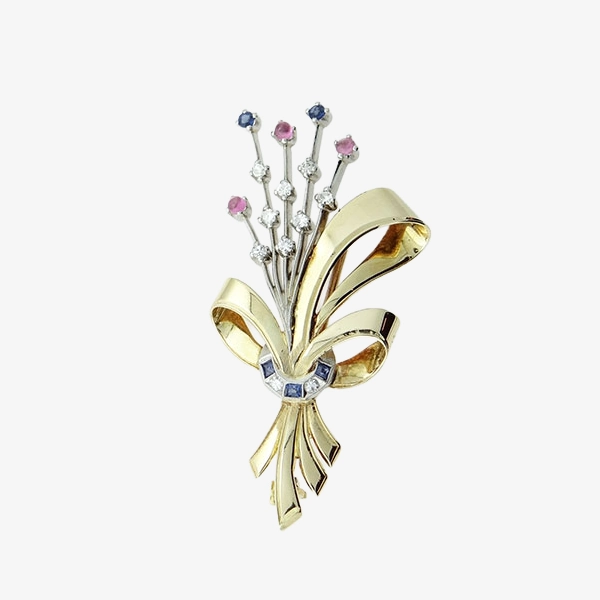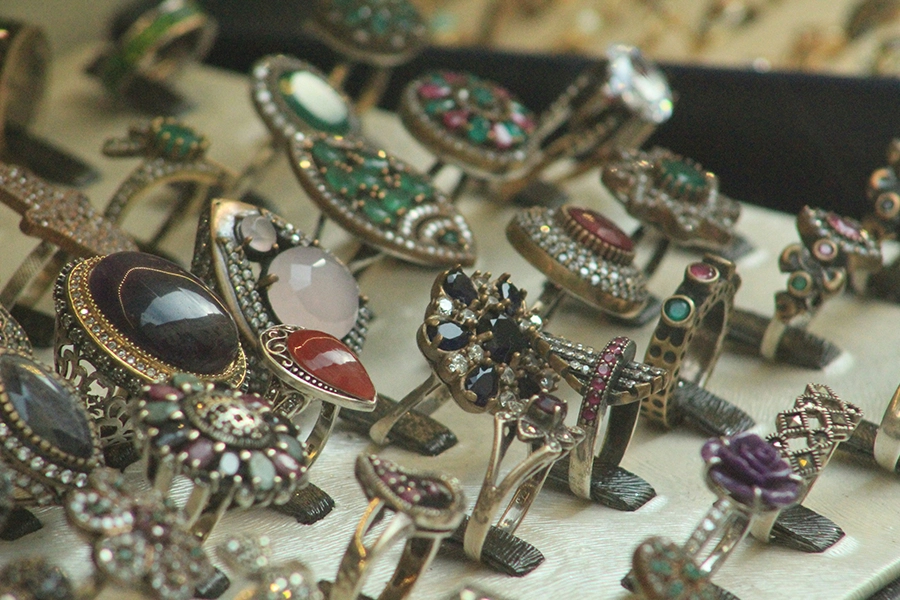Advice, Antique Jewellery, Vintage Jewellery
Are you a vintage expert? Do you know your Retro from Art Deco? We do.
You spot a striking brooch or a clean little ring and the first question pops up. Art Deco, Mid-century or Retro. You do not need a textbook. You just need a few quick tells and a calm eye. This is the friendly guide we give across the counter, with examples you can try right away. If you want to browse as you read, dip into our full Vintage Jewellery collection.
The two-second test
Stand back and squint for two seconds. If the piece reads like shapes and symmetry, think Art Deco. If it feels organic and a bit textural, think Mid-century. If it looks sculpted, bold and a little glamorous with volume in the metal, you may be in Retro territory. Now step closer and check the details.
Quick cue card
| Era | First impression | Shapes | Typical stones | Metal look | Looks best with |
|---|---|---|---|---|---|
| Art Deco (1920s-30s) | Modern and precise | Fans, steps, chevrons, target circles | Old-cut diamonds, calibre sapphires, onyx | White metals, clean edges, fine millegrain | Blazers, crisp shirts, evening slips |
| Mid-century (1950s-60s) | Soft and tactile | Leaves, sprays, curves, abstract forms | Pearls, turquoise, mixed hardstones | Yellow or rose gold, bark or engraved texture | Knits, denim, relaxed jackets |
| Retro (late 1930s-50s) | Glam and sculpted | Ribbons, bows, scrolls, bold forms | Citrine, sapphire, ruby, aquamarine | High-polish yellow or rose gold, two-tone | Tailoring, party looks, statement cuffs |
Art Deco in 30 seconds
Think architecture. Straight lines, stepped edges, crisp symmetry. Stones are often old-cut diamonds and calibre sapphires set into neat frames. Settings tend to be low and smooth so the piece sits close to the body. White metals dominate and edges often have fine millegrain beading. One strong Deco piece is usually enough; let it lead.

Example picks
• Geometric brilliance: Platinum Art Deco Diamond and Sapphire Cluster Dress Ring — precise, low profile, clear contrast.
• Clean blue: Vintage 15ct Gold Aquamarine Brooch (pre-1932) — cool tone stone with a tidy frame that reads Deco.
How to wear: a crisp shirt or a simple slip dress. Keep earrings minimal so the geometry leads.
Mid-century in 30 seconds
Think natural forms and texture. Leaves, sprays and soft abstract curves. Yellow and rose gold appear often, with bark or hand engraved finishes. Pearls and turquoise bring gentle colour. These pieces sit happily with knitwear and everyday layers and they photograph beautifully because of the texture.

Example picks
• Easy texture: Vintage Sterling Silver Half-Engraved Bangle — smooth one side, engraved the other so it hides tiny scuffs.
• Soft colour: Vintage Scandia Sterling Silver Opal Brooch — an organic curve with a gentle opal glow.
How to wear: over a ribbed knit or with denim and a neat blazer. Texture on texture looks intentional.
Retro in 30 seconds
Think glamour and volume. Sculpted ribbons, bows and scrolls. Yellow and rose gold, sometimes two-tone with platinum accents. Stones often bring a warm glow — citrine, sapphire, ruby, aquamarine. Retro pieces are brilliant for occasions and also look sharp with simple tailoring if you keep the rest clean.

Example picks
• Sculpted bow: 18ct Gold and Platinum Diamond and Sapphire Brooch Pin — bold form with a flash of blue.
• Warm sparkle: Retro Vintage 9ct Gold Garnet Cluster Ring — rich colour that loves evening light.
How to wear: sharp jacket, simple top, one strong Retro piece and you are ready.
Tiny clues that help
Fittings and hallmarks tell a story but they are not the whole story. Rollover safety catches arrive later and are very reliable. Trombone clasps are secure on some earlier pins. C clasps are older and hold well on thicker fabrics if the pin has tension. Hallmarks and maker’s marks are the best evidence when present. Look on the back plate of a brooch, along the pin, on a pendant bale or inside a ring shank. If you need a refresher, our quick guide is here: UK Hallmarks on Vintage Jewellery.
Styling that feels current
Let one shape lead. A Deco bar brooch with a crisp shirt. A Mid-century leaf on a knit shoulder. A Retro ribbon brooch on a blazer lapel. Keep earrings simple so the eye lands where you want it. If you love stacking, a bark finish bangle with a smooth chain keeps things calm.
Where to look next
Explore category edits that match these eras: Vintage Brooches, Vintage Rings, Vintage Pendants and the main Vintage hub. If you want a second opinion on an era, bring a photo and we will look at it with you.
FAQ
How can I tell Art Deco from Mid-century at a glance
Deco reads geometric and precise with clean frames and white metals. Mid-century reads organic and textured in yellow or rose gold. Look at shapes and metal first, then stones and fittings.
What does “Retro” mean in jewellery
Retro covers later 1930s through the 1940s and into the 1950s. Expect sculpted ribbons, bows and bold polished forms, often in yellow or rose gold with bright stones.
Where do I find hallmarks
On brooches, check the back plate or the pin. On pendants, check the bale or jump ring. On rings, look inside the shank. Hallmarks confirm metal fineness and the assay office and can help with dating.
Are reproduction pieces always a bad thing
No. Some are well made and fun to wear. If you want period craft and originality, vintage is the better choice. We show hallmarks and measurements, and we inspect pieces in house so you know what you are buying.
Can I wear Art Deco jewellery every day
Yes, choose low profile settings for daily wear and keep pieces away from sprays. Wipe with a soft cloth after wearing. If a clasp feels soft, bring it in and we will check it.
Need a hand placing a piece in the right era. Pop in or send a photo. We are happy to help.

